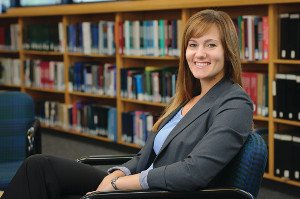discover
THE SIBLING FACTOR
 photo: Steve Zorc
photo: Steve ZorcMegan R. Holmes
A brother or sister can be a role model, a partner in crime, a confidante—or some combination of the three. When traumatic events happen, however, a sibling can play an even more crucial role: a support system.
"Sibling relationships are some of the most important relationships of a lifetime," said Megan R. Holmes, PhD, assistant professor at Case Western Reserve's Jack, Joseph and Morton Mandel School of Applied Social Sciences. "Some research says siblings have more impact than parents."
So, Holmes wondered, do siblings with strong, positive relationships handle trauma better than those with poor ties?
Holmes first pondered the impact of these connections when she worked at a domestic violence shelter during her master's and doctoral studies at the University of California, Los Angeles. Over the years, she noticed staff mainly focused on the adult, primarily female, victims; she saw little attention paid to their children.
Over time, Holmes began to observe what appeared to be a correlation between strong sibling relationships and enhanced abilities to cope among children who witnessed domestic violence. When she looked for research on the subject, though, she found little published. Holmes wants to fill that knowledge gap.
She has won funding to lead two studies exploring the connection between siblings and coping abilities. With support from the Mandel FactorSchool, she's interviewing 20 Cleveland-area families who have experienced domestic violence in the last year. Her goal is to learn more about the mental health of the mothers and their children, as well as the strength of their sibling relationships. She's also observing how siblings interact with each other, and collecting hair and saliva samples to test for physiological evidence of stress.
In the other study, funded by the National Institutes of Health, Holmes and colleagues Adam Perzynski, PhD (GRS '08, sociology), assistant professor of medicine, and Sonia Minnes, PhD (GRS '98, social welfare), associate professor of social work, are analyzing data from 1,700 children nationally who have been investigated by Child Protective Services for some form of maltreatment. The information includes first-hand accounts by parents, teachers and caseworkers, collected four times between the child's birth and age 11.
Holmes and colleagues specifically are looking at coping outcomes and the role of sibling characteristics—for example, the number of siblings, the age gap between them and their birth order—to understand how mothers and siblings can protect children who have witnessed family violence.
"If we can identify the aspects of sibling relationships that play a role [in positive outcomes]," Holmes said, "we can determine what can be promoted to improve relationships among the siblings and, in the end, help the child."






